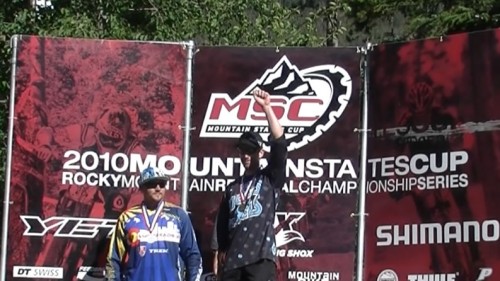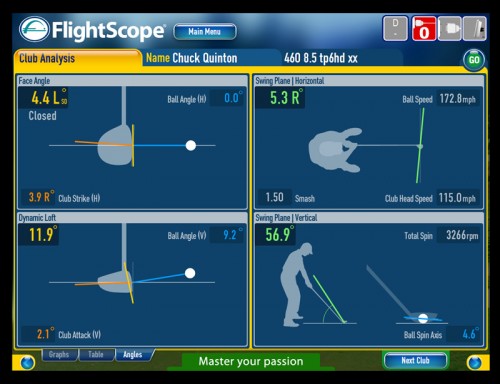By Sam Jarman, RST Certified Instructor – Level 1
I’m writing this after reading Chuck’s excellent article about Ball flight teachers on the blog. This is perhaps the most common sense I’ve read in one place about the different approaches to teaching the golf swing.
Chuck was in turn responding to an email I received from another golf professional about a piece I recently wrote on the blog about fixing my backswing by working in the studio on the movement, rather than hitting golf balls.
Chuck’s response was very clear and black and white, as it was addressing a specific issue, that of long term improvement. Unless you have a clear understanding of the biomechanics of the golf swing and work towards implementing them correctly, you will always be chasing your tail and putting Band Aids on top of Band Aids.
As we all know, you can make any golf swing work if you are very talented and hit enough golf balls. Most of us do not have unlimited practice time and bundles of talent. I believe there is a “best”, most efficient way to swing a golf club, and at present, the Rotary Swing Tour (RST) is it. Working towards this model is the route to long term success.
However, in the “real world”, things are rarely black and white. Varying shades of grey are much more common. I’m sure Chuck will agree with me when I suggest that we as teachers come across situations every day where the teacher and student together need to make a decision as to whether a ball flight lesson is required, or a golf swing movement lesson.
As a good teacher, I feel I should be able to do both, and I know Chuck does too. The student is the customer, and unless I have the kind of relationship with the student where we can talk about what is happening in his or her game, talk about what their immediate and long term plans are and come to an agreement about exactly what direction we should take and when, I probably shouldn’t be teaching them.
I had a typical situation with a student this week. Steve is a very good player, a 1 handicap. He has a good, well grooved golf swing, but has a very shut clubface at the top of the swing and, as a result, is prone to hooks and blocks and has trouble controlling his distances with short irons.
We started working together on RST in April, but made a decision to leave the major changes till after the season had finished. We sorted out Steve’s strong grip, bad ball position, and poor balance and posture.
He has since played some good golf, culminating in him reaching the final of his club Scratch Matchplay championship.
He came for a tune up lesson this week as he was hitting his wedges poorly, with a lack of distance control and the odd bad pull. These are all symptoms of the shut clubface at the top of the swing. But the last thing I wanted to do the week before an important match was to give a golf swing movement lesson and have Steve going out and playing “Golf Swing”, rather than playing golf.
It was clear in this situation that a ball flight lesson was required. I explained to Steve what I thought, how his swing differed from the RST model, and what I wanted to do.
He agreed, so we got him to set up slightly open with his wedges, to open the face slightly at address and move the ball forward, and to exaggerate the feeling he has anyway of holding the clubface off through the ball. The result was what felt like a little fade with his wedges, the opposite of his natural drawing ball flight. Due to the loft on the clubface the ball doesn’t actually move left to right in the air, it just floats and sits, which makes distance control easier and also gives some protection against the pull, the real problem shot with a short iron.
After 45 minutes practising this ball flight, Steve started to feel like he had much better control of his distances. He will practice some more this week, and I’m confident he will play well in his final.
Next Sunday we will head into the studio and start work on the big issues in his swing, safe in the knowledge we have all winter to get them fixed and to get Steve feeling comfortable and confident before the season starts again in April.
One point which is often brought up as a justification for just teaching someone to change their ball flight is that by changing the ball flight, the golf swing movement itself will change. This has some validity. If you teach a slicer to draw the ball, eventually the movement will change to allow the club to come more from the inside.
However, I’m not sure how efficient this method of learning is, or how lasting the changes will be. I have the feeling that you would need to hit a huge number of golf shots to effect significant change. I know from my own experience over the years that it wasn’t until I learned to move properly and understood the cause and effect relationship of movement of the body and movement of the club, that I really began to get control of my ball flight.
I am absolutely committed to RST as a swing model and a “Method”, for all the reasons that Chuck explains in great detail in the blog and on the website. My long term goal for myself and for every single one of my students is to help them swing as efficiently, correctly and safely as possible. RST helps me to understand what is going wrong in a golfer’s swing, to understand the compensations which exist to allow the golfer to hit the ball well sometimes and to plan and implement a programme of improvement.
But at the same time, I still consider myself a tournament golfer, and I know how it is virtually impossible to play your best golf while thinking consciously about your swing. Chuck’s Mushin Golf articles describe a great mindset to play well. I just like to focus totally on the target and let the ball go to it.
There is a time and a place to work on the golf swing movement, and a time and place to focus on just flighting the ball to the target. It is up to the teacher and the student to communicate and come to a decision about the best way to proceed to ensure the student both enjoys his golf and improves his skills and technique in the long run.
As an RST instructor, I know I have the depth of knowledge and understanding to deliver the right lesson at the right time for all the people I work with. As a movement coach, I can give either type of lesson. A ball flight coach is more limited in his options.
Note: This article was originally written in October.
To contact Sam for lessons or learn more about him, check out his Certified Instructor bio and his golf instruction website.



















